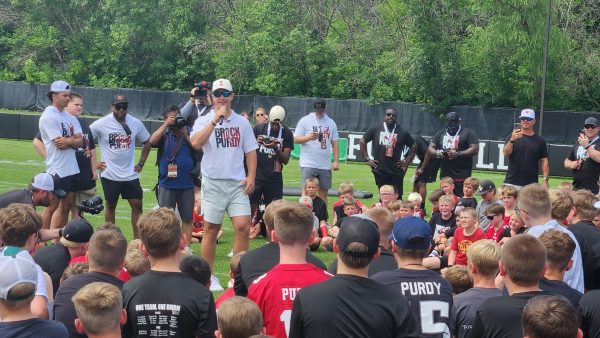ISU wrestling follows tight regimen to lose weight
December 8, 2015
Many college students have heard of and fallen victim to the freshman 15, which implies that incoming college freshmen will gain 15 pounds during their first year.
Wrestlers can’t allow that to happen, freshmen or not.
Redshirt senior Tanner Weatherman, Iowa State’s 165-pound wrestler, not only had to cut the normal weight wrestlers gain, he had to cut an extra nine pounds because he moved down a weight class from 174-pounds, which is what he wrestled last year.
“The hardest part is just getting down there,” Weatherman said.
To get down to 165 pounds, Weatherman started cutting weight in July. He shrunk his body by strict dieting and running more often. He cut out carbs from his diet and made a conscious decision to only put healthy food into his body.
“Less Taco Bell, less McDonalds, that kind of thing,” Weatherman said. “It’s hard to stay focused when you’re that far away from competition. We don’t compete until November, and I was already doing this in July.”
Earl Hall, the Cyclones’ 133-pound wrestler, has moved up a weight class since coming to Iowa State. He doesn’t deal with the offseason regiment that Weatherman does.
Hall didn’t start cutting weight until the preseason began. The hardest part wasn’t cutting weight — it was getting into shape.
Even though Hall doesn’t have to cut as much weight as Weatherman, he still has to make conscious decisions about what he’s putting into his body. However, wrestlers are allowed a few cheat foods every week or every other week.
“You can’t be perfect, you’d drive yourself crazy — or at least I would. I’m a big chocolate guy, big sweet tooth guy,” Weatherman said. “Just get that craving out of the way, candy bar, cake, whatever it is.”
It’s important for wrestlers to keep their nutrition levels up even though they are trying to cut weight. They drink eight ounces of water every hour and try to eat five to six small meals a day instead of eating three big meals to keep their metabolism levels high.
When the wrestlers go to practice in the wrestling room is hot so the coaches can get a high sweat rate out of their guys, said assistant coach Trent Paulson.
“[Nutrition] is basically just fuel, at least that’s the way I look at it,” Weatherman said. “If you don’t put gas in your car, you aren’t going to go very far. You have to keep putting good food in your body, stuff that is beneficial. Protein, bananas, [they] help with recovery.”
The day before a meet or a tournament is an interesting one for wrestlers. They don’t eat or drink much to make sure they make their weight. Paulson said if a wrestler is shrinking eight to 10 pounds each week, they are doing it the wrong way.
Even if a wrestler is one pound over the night before, it’s important that they still eat fruit or something nutritious before bed so their body has calories to burn in its sleep. Hall said he often wakes up with cottonmouth the morning of a meet because of the lack of water from the day before.
After the weigh in, Weatherman immediately starts refueling, but he never tops up his tank.
“I’ve done the same thing ever since my freshman year of high school,” Weatherman said. “I have half a turkey sandwich, a granola bar, an apple and then two or three pounds of water, depending. I like the saying, ‘A hungry dog fights best.’ So I try not to go on the mat completely stuffed.”
Weatherman can lose up to four pounds in a match, so if he’s in a tournament, he needs to keep refueling throughout the day. Bananas are important along with protein and more water.
“Nobody likes cutting weight, but the [difficulty] of it is based on your nutrition and your preparation,” Paulson said. “Your weight shouldn’t come the week of the tournament. It should come months prior of discipline, eating the right thing and shrinking your body.”

















